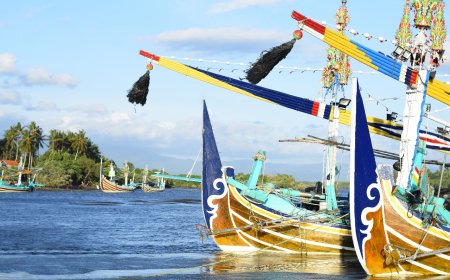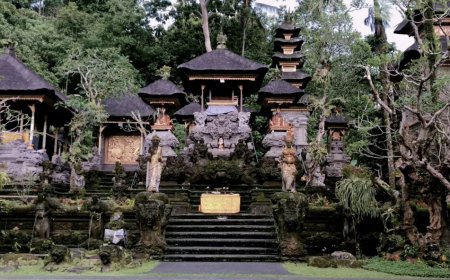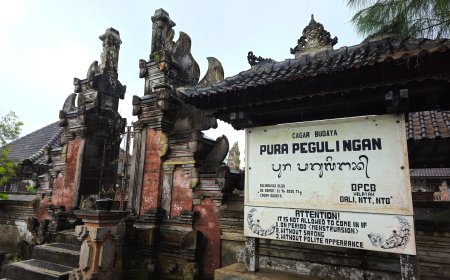The Mutering Jagat Dalem Sidakarya Temple: Tracing the Journey of the Brahmana Keling in Bali
In the village of Sidakarya, Denpasar, there is a sacred temple known as Pura Mutering Jagat Dalem Sidakarya. This temple serves as a place of worship for Hindu followers to perform Tirta Penyida Karya. The temple is associated with the journey of Brahmana Keling to Bali, who was eventually bestowed with the title Dalem Sidakarya by King Bali, Dalem Waturenggong.
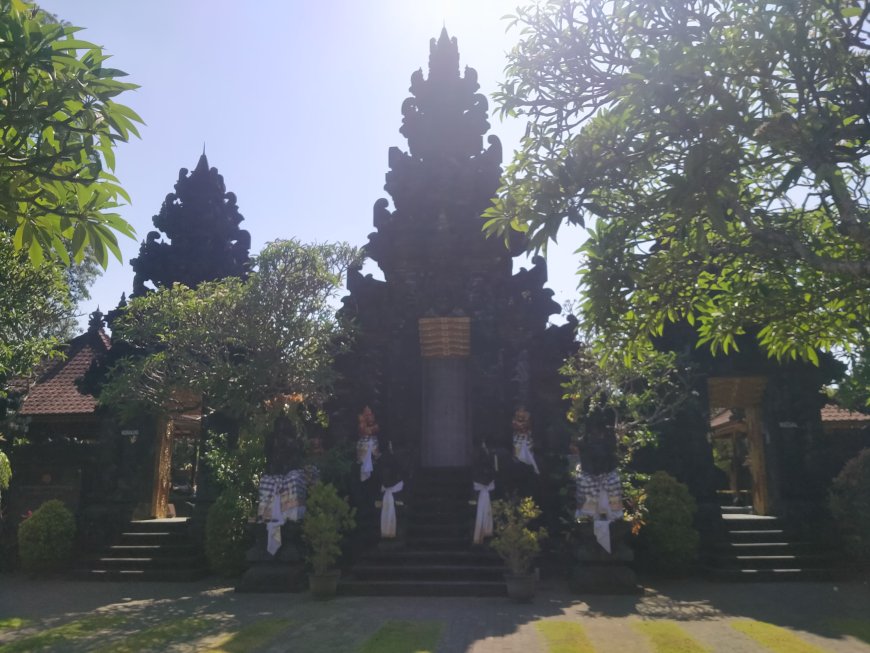
Mutering Jagat Dalem Sidakarya Temple is located at Dewata Street No. 16, Sidakarya Village, South Denpasar District, Denpasar City. Formerly, this location was part of the southern coastal area known as Pandanda Negara in Badung Regency. In performing Panca Yadnya, Hindu followers generally seek Tirta Penyida Karya at Mutering Jagat Dalem Sidakarya Temple.
In Mutering Jagat Dalem Sidakarya Temple, there are several shrines, including the Pemayun Agung shrine, dedicated to Besakih Temple and Mount Agung, Manik Geni, dedicated to Lempuyang Temple, Pemayun Toya, dedicated to Batur Temple, Pemayun Cakra, dedicated to Batukaru Temple, Pemayun Ngurah Agung, dedicated to Uluwatu Temple, and Pemayun Putra, dedicated to Sakenan Temple. In addition to the Sad Kahyangan shrines, there is also the Parahyangan Jagat Natha. There is also a Gedong as the abode of Ida Batara Dalem Sidakarya. With the centralization of the Sad Kahyangan shrines in this temple, complemented by the presence of the Jagat Natha shrine, the temple is named Mutering Jagat Dalem Sidakarya Temple.
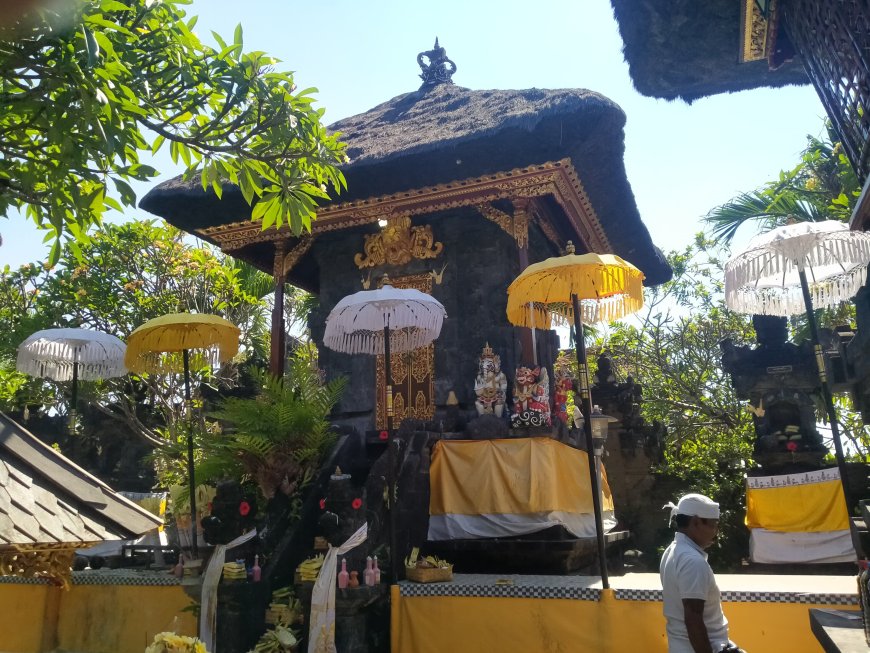
Main Pelinggih (Photo Source: Private Collection)
The existence of Mutering Jagat Dalem Sidakarya Temple traces back to the arrival of Brahmana Keling, who assisted his brother, King Dalem Waturenggong, in the Eka Dasa Rudra ceremony at Besakih. Briefly, the local community did not believe that Brahmana Keling had a familial connection with Dalem Waturenggong. Brahmana Keling was then expelled in a disrespectful manner.
Before leaving Besakih Temple during his expulsion, Brahmana Keling pronounced a curse known as Kutuk Pastu. The content was: "Wastu tats astu karya conducted in Besakih Temple without Sidakarya, the land will suffer drought, the people will suffer from drought, sarwa gumatat-gumitit will cause destruction throughout the Bali universe." As Brahmana Keling's voice echoed like lightning in broad daylight, all the people witnessed it in awe, frozen in place. Brahmana Keling then left Besakih Temple heading southwest. Not long after, the curse proved to be true.
One night, Dalem Waturenggong meditated at Besakih Temple and received guidance from Ida Batara that he had sinned by expelling his brother. To restore the situation, only Brahmana Keling had the ability to do so. The situation could be reversed as desired, and Brahmana Keling lifted his curse after Dalem Waturenggong pleaded for mercy. Subsequently, Dalem Waturenggong honored him with the title Dalem Sidakarya.
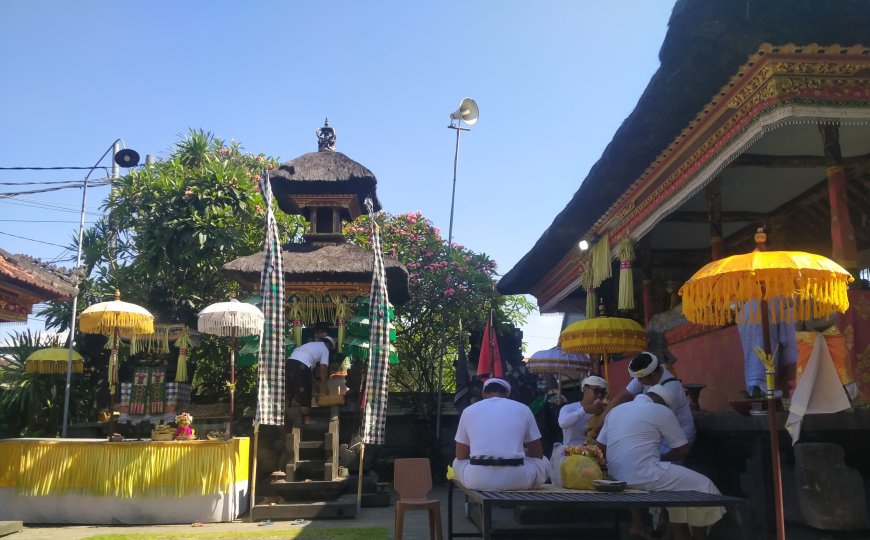
Piodalan Preparation Atmosphere at Mutering Jagat Dalem Sidakarya Temple (Photo Source: Private Collection)
In front of ministers/patih/pre arya, Dang Hyang Nirarta, and Dalem Sidakarya, Dalem Waturenggong said: "From now on, for every Hindu follower performing mandatory duties of Tirta Penyida Karya, so that the work becomes Sidakarya." To commemorate the services of Dalem Sidakarya and to establish a place of worship for Hindu followers to seek Tirta Sidakarya, around the year 1518 AD, Dalem Waturenggong ordered the construction of Dalem Sidakarya Temple, which later changed its name to Mutering Jagat Dalem Sidakarya Temple. The reason was that the worship of Sad Kahyangan was centralized. "Mutering" means center, "Jagat" means world or universe, and "Dalem Sidakarya" is the title of Brahmana Keling.
Currently, the temple's Pengempon (caretakers) consists of residents of Sidakarya Village with five customary banjars, namely Br Dukuh Mertajati, Br Sari, Br Tengah, Br Sekar Kangin, and Br Suwung Kangin. The temple's annual celebration, Piodalan, falls on Saturday, Saniscara Kliwon Wuku Landep, or coincides with Hari Tumpek Landep. During the temple's Piodalan, a sacred dance called Tari Telek is usually performed, followed by Ida Sesuhunan in the form of Barong and Rangda, symbolizing the balance of nature, and also Tari Topeng Dalem Sidakarya.









